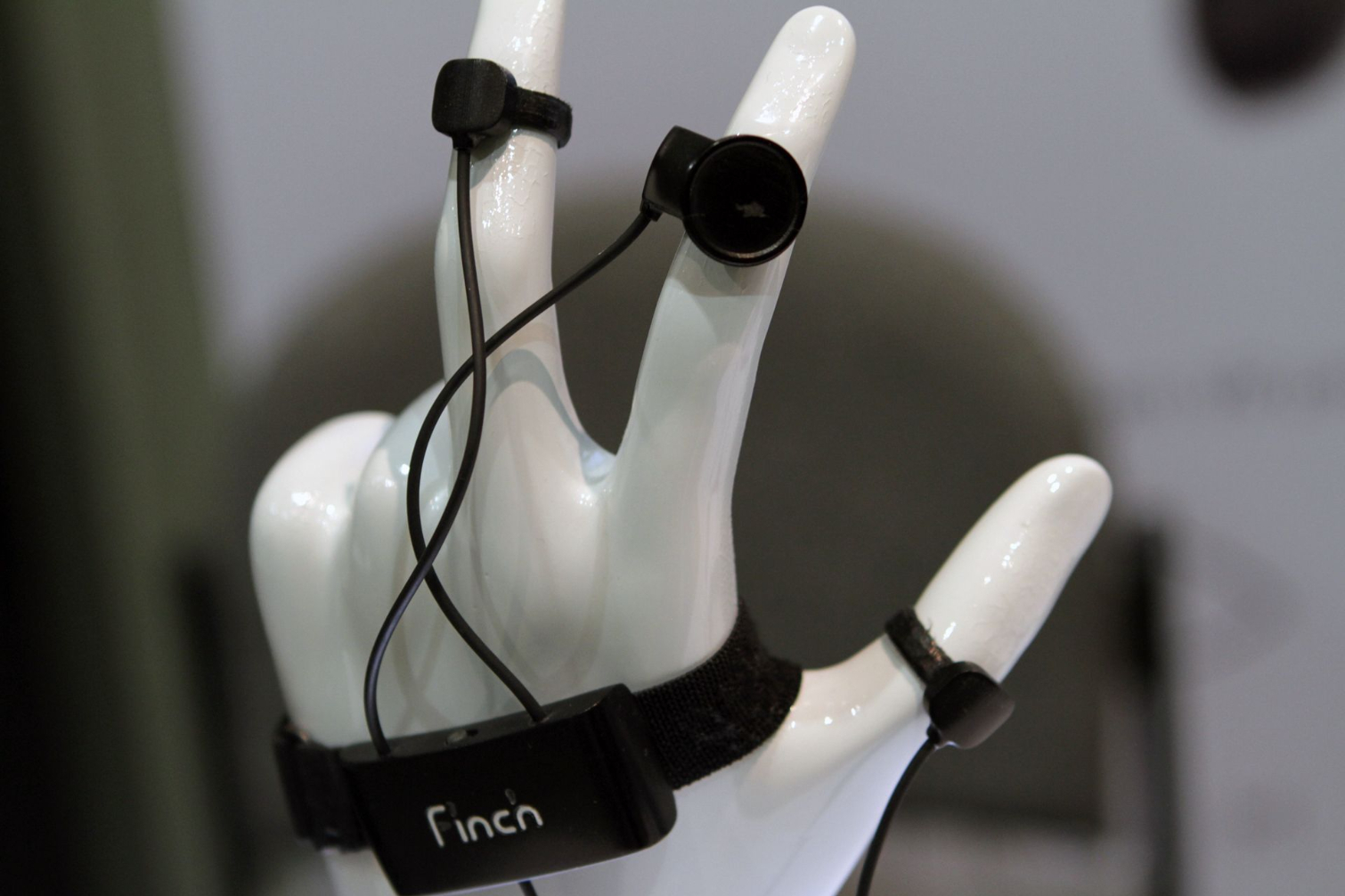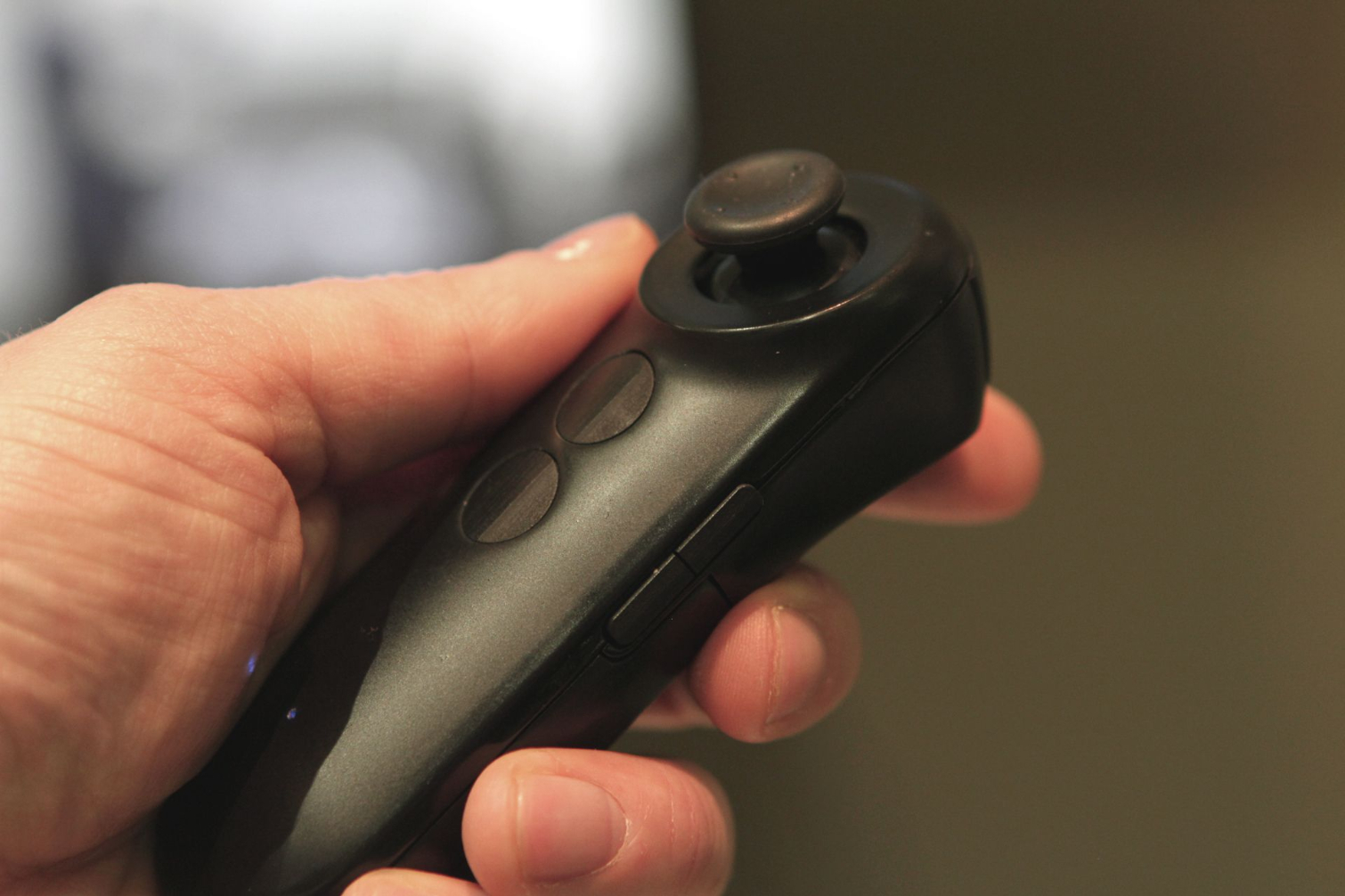Finch VR Takes Different Approach To Hand Tracking In VR
As they say, there’s more than one way to skin a cat, and to borrow the colloquialism, there’s more than one way to bring hand tracking into VR. Most of the solutions we’ve seen either rely on cameras to track your appendages and digits, or like the Rift and Vive hand controllers (and the Vive Trackers), use a tracked device to determine where you hands and fingers are and then give you a facsimile of them in the VR environment. Finch VR, though, is taking a different approach with its “Hands” controllers.
Going MoCap
Although the other two Finch VR controllers we’ve seen are similar in look and design to existing controllers--and indeed, the company’s Dash looks a lot like the Daydream controller, and its Shift is a facsimile of Oculus and HTC controllers--Hands is a different, and more innovative, animal.
Hands relies on sensors mounted on your hand, fingers, and arms to track movement and input. It reminds us in many ways of the inexpensive Noitom Perception Neuron motion capture (mocap) suit in that both place little nodes that contain IMUs at key points on your body. The nodes are connected to one another and a hub via wires. The data can be transmitted to other devices via a wired connection, although in the case of Hands, Finch VR uses Bluetooth for wireless transmission to a device.
Taking that as a framework, you could say that Finch VR uses a sort of "advanced mocap." Finch VR's Alexey Kartashov describes Finch VR's approach thusly:
-Uses advanced algorithms to capture movements of body, arms, hands and fingers with the reduced number of nodes (no sensor on the wrist and chest, just one sensor per finger)-Eliminates sensor drift (huge problem for IMU-based mocap)-Allows for one-click calibration
Although obviously you’d ideally want to have a pair of Hands (heh) for many games and experiences, a single Hand controller has five nodes: on your upper arm; on your palm; and on your index finger, middle finger, and thumb. Together, they give you arm, hand, and three-finger tracking.
The node on your index finger also has a tiny touchpad that gives you input options including swipe, tap, click, and point. Thus, although the whole kit will let you perform actions like scooping up a pair of guns and blasting away, the index finger input also lets you navigate and tap menus and even type out text (hunt-and-peck style). The kit also enables gesture input.
Get Tom's Hardware's best news and in-depth reviews, straight to your inbox.
| Header Cell - Column 0 | Finch VR "Hands" Controllers |
|---|---|
| Nodes | Five (arm, hand, fingers x3) |
| Latency | 7.5ms |
| Battery Life | 10 hours |
| Tracking Accuracy | 0.1º |
| Tracking Range | 360 degrees |
| Gesture ID Accuracy | 95% |
| Sensor Data Rate | 100Hz |
| Weight | 75g |
| Wireless | Bluetooth LE 4.0 |
Advantages And Disadvantages
Certainly, there are both upsides and downsides to this mocap approach to VR hand and finger input.
There’s a beautiful simplicity to using nodes with IMUs; it’s almost low tech, in a good way. Further, such a setup is extensible. It depends on how exactly Finch VR built the system, but as the company expands what it offers, you should be able to add additional nodes (or fewer ones), put more nodes elsewhere on your body (such as your legs and feet), or even add node-equipped devices that are connected to the web of nodes.
It’s also ostensibly platform agnostic. Indeed, it’s designed to work with mobile VR (currently, Android only, but iOS is coming) or PC-based VR (it supports Windows and SteamVR), and in any case it supports both Unity and Unreal and relies on a universal standard (Bluetooth) to transmit data. Further, because there are no cameras or external trackers, Hands gives you 360-degree tracking.
Some may wonder about the issue of latency. Bluetooth LE offers sub-10ms latency, though, and so does Hands (7.5ms, specifically). Users have more or less come to accept and deal with that latency, but we can’t help but wonder if at some point that will begin to seem painfully slow in VR experiences.
Hands is an ungainly thing, physically speaking, although it’s certainly light enough once you strap it all on. Contrast it with Google’s Daydream, and even the Vive and Rift controllers--you just pick them up and off you go--without having to strap on multiple nodes and wriggle your hands fingers into the various holders. Even when you’re not using Hands, that’s a lot of kit to store and many cables that will almost certainly intractably tangle themselves like a string of Christmas lights.
Speaking of Google Daydream, that’s another issue: Although all of Finch VR’s controllers are Android compatible, so they work with SteamVR, Finch VR told us that they can’t work with Daydream yet because it’s a closed platform.
Finally--although this one is debatable--Finch VR requires developers to implement Hands using its SDK and/or API. Further, its Shift and Dash controllers also each have their own SDK. That means universal adoption will probably never happen, so users who fall in love with Hands (and/or Shift and/or Dash) will always be limited in what games and experiences they can enjoy with them.
One could make the same argument against Rift and Vive controllers, we suppose. However, a key difference is that both are tightly tied to established and rapidly growing ecosystems, whereas Hands is designed to work across many VR systems. In other words, requiring a special SDK or API eliminates that platform advantage. (Although Finch VR assured us that it’s a simple implementation, and what’s more, it includes a Gesture Creation Tool so devs can make their own gestural inputs.)
The Dev Kit(s)
Presently, you can preorder a Hands dev kit from Finch VR (the Finch DK1) that includes a pair of arm controllers (which include five-apiece nodes), Bluetooth adapters for the PC, charging cables, the SDK/API, and three gaming demos. It will cost you a weirdly specific $238 (plus shipping).
You can also preorder the Shift DK1 dev kit, which includes two joystick controllers plus the upper-arm bands, the Bluetooth PC adapter, charging cables, SDK/API, and three demo games. This one will cost you $179 plus shipping. Finch VR said that it expects Shift to hit the market in Q4, in time for holiday shopping, and it should cost $100-150 at retail.
Dash is coming to retail in Q3 and is slated to run $20-30; it depends on what gets included in the final version. Finch VR is still deciding whether or not to include haptics, and it may switch out the joysticks for a trackpad.
One or more of these controllers may come bundled with a headset and a few VR titles, too.
Seth Colaner previously served as News Director at Tom's Hardware. He covered technology news, focusing on keyboards, virtual reality, and wearables.





